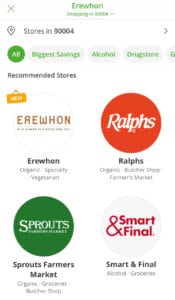Kristin writes:
Can you talk about cortisol and how it affects our bodies? With all this COVID craziness, it feels like my stress levels are high all the time. What nutritional things can we do to help our stress levels? What can we do about the belly fat that being stressed makes us hang onto?
This article is also available as a podcast. Click to listen
Kristin is not the only one feeling more stressed in recent months. The American Psychological Association conducts an annual poll to gauge stress levels. The specific things that people are stressed about change from year to year but the overall level of stress remains fairly constant.
Even in the best of times, a majority of Americans report living with moderate to high levels of stress and also feel that their stress levels aren’t healthy. Not surprisingly, a new poll conducted in April and May of 2020 found that reported stress levels have jumped up considerably in response to the pandemic.
As many of us know all too well, reaching for sweets or other comfort foods is a typical coping mechanism when we’re stressed. With many people cooped up at home, stress and boredom eating is on the rise, leading to weight gain. And as if that weren’t bad enough, research suggests that when we’re stressed, those comfort calories may lead to weight gain more quickly.
Wouldn’t it be great if there were foods or nutrients that could defuse anxiety and ward off the negative effects of daily stress? No wonder that I see so many magazine and web articles about “stress-busting foods!”
Unfortunately, a lot of these are just puff pieces with little to no scientific basis. Sometimes, however, journalists interview actual scientists about their research. The problem is that researchers often use the word “stress” to mean something very different than what the general population thinks of as stress—and that often leads to confusion.
Physiological stress vs. psychological stress
When we say we’re stressed, we usually mean that we feel overwhelmed or anxious—too many demands, deadlines, and worries, and not enough time, money, and energy to get it all done.
Researchers, on the other hand, often measure physiological stress responses, which don’t necessarily correspond to our psychological experience. So, when they report that a food or nutrient has an effect on “stress,” that doesn’t necessarily mean that you’ll feel better or worse when you eat it.
Let me give you an example.
Do refined carbs cause stress?
In a story on the connection between diet and stress, researcher Robert Ludwig told NPR’s Morning Edition about an experiment he did on obese teenage boys in which the boys who ate highly-processed cereal for breakfast had higher levels of adrenalin (a stress hormone) than those who ate a high protein breakfast instead. The boys who ate more protein were also less hungry and ate fewer calories at lunch. Chalk one up for a high protein breakfast!
Unfortunately, no one asked the boys about their mood or perceived stress level, so we don’t know whether the different meals had any effect on whether they felt any more or less stressed. Nonetheless, if you heard the piece, you probably concluded (as did the reporter) that eating lots of refined carbs and sugar will make you feel more stressed and anxious.
Or do refined carbs calm you down?
But hang on! In her book The Serotonin Power Diet, Dr. Judith Wurtman claims that a big dose of refined carbohydrates is exactly what you should eat to feel more relaxed and happy. That’s because refined carbohydrates promote the production of serotonin, a “feel-good” neurotransmitter.
So which is it? Are we supposed to eat carbs or avoid them to beat stress?
The reason these two scientists seem to be contradicting one another is that they are measuring completely different things. Ludwig is looking at the effect of diet on adrenal hormones, and Wurtman is describing the effect of diet on neurotransmitters. Of the two, neurotransmitters probably have a closer relationship to our mood.
The reason these two scientists seem to be contradicting one another is that they are measuring completely different things.
Nonetheless, I think the disadvantages of Wurtman’s approach outweigh the benefits. Eating refined carbohydrates may temporarily boost serotonin levels. (After all, that’s probably why we crave them when we feel stressed!) But they also sent your blood sugar, insulin, energy, and appetite on a roller coaster ride. Riding that roller coaster on a regular basis is a good way to increase your risk of Type 2 diabetes and heart disease.
Fortunately, eating refined carbs is not the only way to boost those mood-enhancing neurotransmitters. A few minutes of aerobic exercise, exposure to sunshine, doing a nice favor for someone, or even simply smiling, are all proven ways to reduce your mental and emotional stress levels – without the negative effects of a carbohydrate binge.
Can probiotics reduce stress levels
There is one stress-reducing dietary strategy that might be worth a try. The bacteria that thrive in our guts appear to affect both our adrenal stress hormones and our neurotransmitters. Translation: Prebiotic and probiotic foods may help reduce anxiety and depression and improve our state of mind.
The more different kinds of beneficial bacteria in your gut, the better. So rather than put all of your probiotic eggs in the yogurt basket (as it were), try to branch out with other types of fermented and cultured foods—such as fermented soy products like tempeh, natto, and miso—and lacto-fermented vegetables (which is the fancy new name for old-fashioned pickles). But wait, it gets even better: Cheese, beer, and red wine are also sources of probiotic bacteria. (Enjoy them responsibly!)
The more different kinds of beneficial bacteria in your gut, the better.
On the prebiotic side of things, you can further encourage diversity by providing your gut bacteria with lots of different types of fiber. So, instead of relying on a single fiber supplement to meet your fiber quota, try to get your fiber from a variety of different grains, legumes, nuts, fruits, and vegetables. As is so often the case, eating a variety of whole foods offers more benefits than a diet made up of a short list of superfoods
How to beat stress belly
Finally, is there anything we can do to fend off stress-related belly fat? It’s true that chronically high cortisol levels may trigger the body to store fat preferentially around the middle. Talk about adding insult to injury!
Expecting food, which is a source of energy, to burn fat, which is a form of stored energy, is a little like expecting an ice cube to warm up your coffee.
But despite what you’ll see online, there aren’t any foods that specifically burn belly fat. Expecting food, which is a source of energy, to burn fat, which is a form of stored energy, is a little like expecting an ice cube to warm up your coffee.
The best way to prevent stress-related belly fat is to reduce your stress levels. I know that’s easier said than done these days. A certain amount of stress during a global pandemic and economic crisis is inevitable. But some of it is optional.
Here are a few ways that I’ve been keeping my stress levels as low as possible:
- Limit consumption of news to the absolute minimum needed to stay informed
- Choose books, movies, music and friends that you find uplifting and avoid those that you find draining or depressing
- Get offline and get outside every day
- Move your body—ideally, in ways you enjoy !
- Get enough sleep
Your body perceives a lack of sleep as stress. Those who skimp on sleep tend to have higher cortisol levels, which may help explain why under-sleeping is consistently linked with weight gain.
If you’re too stressed to sleep, a guided meditation or yoga Nidra practice can be a great way to calm your mind and body and help you relax into restorative sleep. Check out one of the many meditation or mindfulness apps, such as Headspace, Calm, or my favorite, Insight Timer.
Even when the current crisis has abated, life will continue to be stressful. So learning how to keep stress from damaging your health (or your diet) will not be wasted effort!
Originally published at QuickandDirtyTips.com

 Happy Earth Day!
Happy Earth Day! As a nutrition coach in University of Maryland’s Health Center, I’ve found that my clients who grocery shop regularly are more likely to meet their nutritional goals compared to those who do not. This makes sense, as it’s pretty hard to eat healthfully if you lack nutritious foods in your home. With the Instacart app, you can have fresh produce delivered to your home with the literal flick of your finger. Not having time to make it to the grocery store will no longer be an excuse for not eating healthfully.
As a nutrition coach in University of Maryland’s Health Center, I’ve found that my clients who grocery shop regularly are more likely to meet their nutritional goals compared to those who do not. This makes sense, as it’s pretty hard to eat healthfully if you lack nutritious foods in your home. With the Instacart app, you can have fresh produce delivered to your home with the literal flick of your finger. Not having time to make it to the grocery store will no longer be an excuse for not eating healthfully. After typing your zip code into Instacart, a list of stores in your area will come up on your screen. After selecting a store, you can use the search bar to quickly find and order specific items, or, for a more authentic grocery store experience, you can add items to your cart as you peruse the different categories. You can also access Instacart
After typing your zip code into Instacart, a list of stores in your area will come up on your screen. After selecting a store, you can use the search bar to quickly find and order specific items, or, for a more authentic grocery store experience, you can add items to your cart as you peruse the different categories. You can also access Instacart